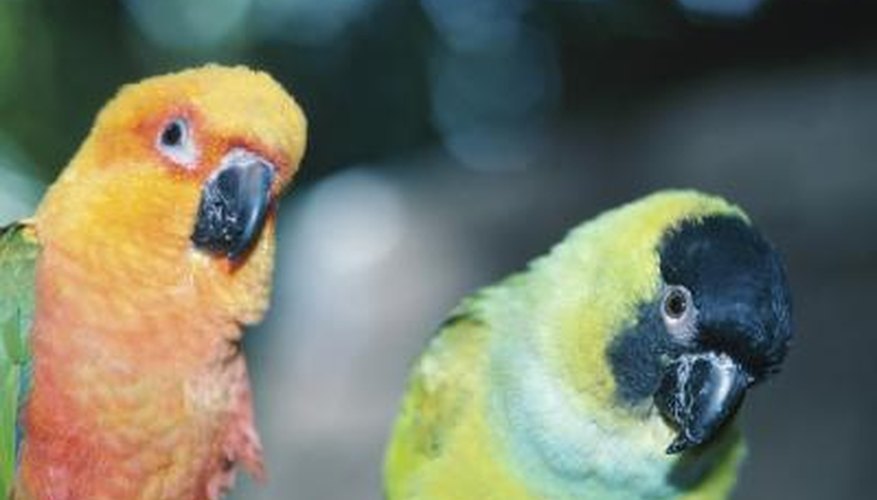Bourke's parakeets are small, relatively calm birds often kept as pets. The Hamilton & District Budgerigar Society recommends these birds for beginners. Bourke's parakeets live for 8 to 15 years, averaging about 12 years. They develop their adult colouration at 8 to 9 months. Ordinary Bourke's parakeets have sex-linked differences in feather colouration, but the rosy Bourke's, a pink variant, can be harder to sex. The only sure way to determine male from female is to have the bird tested by a vet, but a few differences between the sexes can be noted.
Head Shape
According to the Hamilton & District Budgerigar Society, female rosy Bourke's parakeets have rounder heads than the males. However, determining the sex of a bird from its head shape can be extremely tricky. Males may hold the feathers on top of their heads higher, making it appear that they have the rounded head typical of a female. Careful examination can help owners determine difference.
- According to the Hamilton & District Budgerigar Society, female rosy Bourke's parakeets have rounder heads than the males.
- However, determining the sex of a bird from its head shape can be extremely tricky.
Size
Male rosy Bourke's parakeets are often larger than females of the same species. The average rosy Bourke's parakeet is 8 ¼ to 8 ½ inches in length. Size differences between male and female may be very slight, but in general, females tend to be on the shorter side of this range and may be slighter in build.
Blue Band
Wild-type Bourke's parakeet males have a band of blue feathers just above the nostrils. In the rosy Bourke's, this band is significantly reduced and may be entirely absent. However, the presence of a few light blue feathers on the head of a rosy Bourke's parakeet specimen are a strong indicator that the bird is a male. It may be necessary to look very closely in order to identify these feathers.
- Wild-type Bourke's parakeet males have a band of blue feathers just above the nostrils.
Gray or Darkened Feathers
Female rosy Bourke's parakeets often have darker colouration on their faces than males. They may also show more grey feathers scattered over their body. Males are usually a more even shade of pink overall, with little to no grey in the face. Females may also have wing stripes that are usually not present in males, although some males do develop these stripes.
- Female rosy Bourke's parakeets often have darker colouration on their faces than males.
- Females may also have wing stripes that are usually not present in males, although some males do develop these stripes.
DNA
Most vets can perform a genetic test on individual rosy Bourke's parakeets to determine whether the bird is a male or a female. This test is relatively inexpensive, almost always accurate, and is the only way to be entirely certain of the sex of a given bird.
